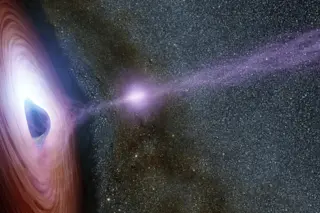Neutron stars, black holes and other remnants of stellar explosions are some of the universe’s most intriguing objects – and some of the hardest to study. But when NASA’s newest Explorers Program mission, IXPE, launches, we’ll see them like never before.
Stellar remnants such as black holes and neutron stars are difficult to see. Because of their tiny size and oftentimes obscuring disks of dust and gas, direct measurements of these objects have long eluded astronomers. However, such extreme objects heat their environments to millions of degrees, which causes high-energy emission in the form of easily-observable X-rays. Studying these X-rays provides a window into the world around otherwise impossible-to-see phenomena.
Now, NASA plans to delve deeper into black hole and neutron star X-ray emissions with the newest addition to its Explorers Program mission lineup: the Imaging X-ray Polarimetry Explorer (IXPE). Led by Principal Investigator Martin Weisskopf at NASA's Marshall Space ...














